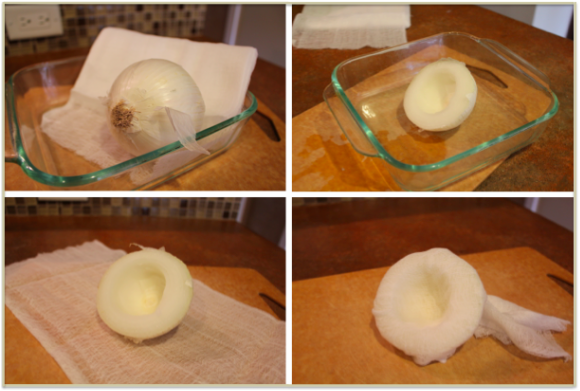It’s likely you’ve heard stories about that poor child who has suffered from chronic ear infections, was on multiple rounds of antibiotics, and eventually had ear tubes put in. Or perhaps this is the story of your own child. Sadly, this is a common scenario that is often preventable.
Second to well-child visits, ear infections (otitis media) are the most common reason parents bring their children to the pediatrician. Approximately 30 million doctor visits per year are due to childhood ear infections, accounting for almost half of all antibiotic prescriptions.
Additionally:
- Nearly 90% of children have otitis media some time before school age
- More than 60% of kids have one before the age of 2
- 30% - 40% of children have recurrent ear infections lasting for 3 months, with 10% lasting as long as 1 year (2)
So, why are children highly prone to ear infections?
Otitis media is generally a result of two factors: fluid accumulation within the inner ear, and the anatomy of a child’s ear canal.
In the case of otitis media, fluid accumulation within the ear is not due to pool water, bath water, or any other external source. This fluid is produced by the body due to an immune response. Similar to mucus production, this fluid is a natural response to irritants and intruders, and is a mechanism through which the body protects itself. In the face of chronic immune irritants, such as allergenic foods, environmental allergens, or even recurrent colds, the body defends itself by increasing these protective fluids and barriers.
Another significant contributing factor to the prevalence of otitis media during childhood is the difference in anatomy and structure of the ear canals. A child’s ear canal is positioned horizontally, making drainage of fluid much more challenging. As we grow older, these canals begin to slant vertically toward the nose and mouth, helping facilitate fluid drainage.
The combination of increased fluid production plus difficulty draining is the basis for many ear infections and can become a chronic state. In addition to the increased pressure and discomfort from fluid accumulation, it is also a warm and inviting environment for pathogens (bacteria, viruses, yeast) to thrive.
And while some ear infections may have a bacterial component, this frequently is not the case. Antibiotics are often not necessary for the treatment of otitis media, and their recurrent use can predispose individuals to future infections and immune system dysfunction. Utilizing natural treatments addresses the root causes of the problem and helps prevent future occurrences by strengthening the immune system so it can fend off future infections.
While ear infections present differently among individuals, here are some common signs and symptoms to look for if you suspect your child has an ear infection:
- Irritability & crying
- Difficulty feeding or sleeping
- Pulling on the ear
- Complaints of ear pain or fullness
- Fever
Naturally you may be wondering what you can do as a parent to help prevent and decrease the recurrence of otitis media. Here are six natural approaches to consider:
1. Prevent ear infections in the first place:
- Breastfeed, if possible! Studies show breastfed babies are at least half as likely as formula-fed cohorts to get ear infections
- Have child avoid drinking fluids while lying on their back
- Avoid exposure to smoke (tobacco, smoke from wood stoves, etc)
- Avoid environmental allergens (pet dander, dust mites, molds) and consider using a HEPA filter in the child’s bedroom
2. Avoid food sensitivities and inflammatory foods:
- Refined sugars (including fruit juices, candy, soda, etc): Sugar depresses overall immune function, increases inflammation, and feeds pathogens
- Dairy: Increases congestion, inflammation, and mucus production
- Other common food sensitivities: eggs, soy, wheat, corn, tomatoes, & citrus
3. Immune supportive nutrients & herbs:
- Consider using a quality multivitamin along with additional Zinc, Vitamin C, Vitamin A, Omega-3 Fatty Acids, or probiotics (*Please consult with one of our Naturopathic Doctors for specific recommendations)
- Elderberry syrup (Read about the benefits of elderberry syrup here)
4. Garlic-Mullein Oil Ear Drops:
These drops provide natural soothing and antimicrobial effects
Note: In the case your child has a ruptured ear drum, do not place anything in the ears without first consulting with your doctor.
5. Onion ear muffs:
A warm onion ear muff provides both soothing and antimicrobial effects. See below for specific instructions
6. Chiropractic care and lymphatic massage:
Manual therapies can be extremely beneficial to facilitate drainage of fluids within the ear, and assist in relieving pressure and discomfort.
- Cut a whole onion in half (Scoop out a couple inner layers to create a cup to surround the ear)
- Heat onion in oven (250 – 300 degrees) for approximately 15 minutes or until the onion is warmed and juices are visible on the surface.
- Wrap onion in a cheese cloth and allow onion to cool to a temperature that is comfortable to place over the ear
- Cup onion over the affected ear for 15 minutes
- Repeat as necessary to reduce pain and inflammation
** The above information is for informational and educational purposes only, and is not intended as a substitute for medical professional help, advice, diagnosis, or treatment. If you suspect your child has an ear infection, please consult with your doctor for proper assessment and treatment.
Resources:


 RSS Feed
RSS Feed